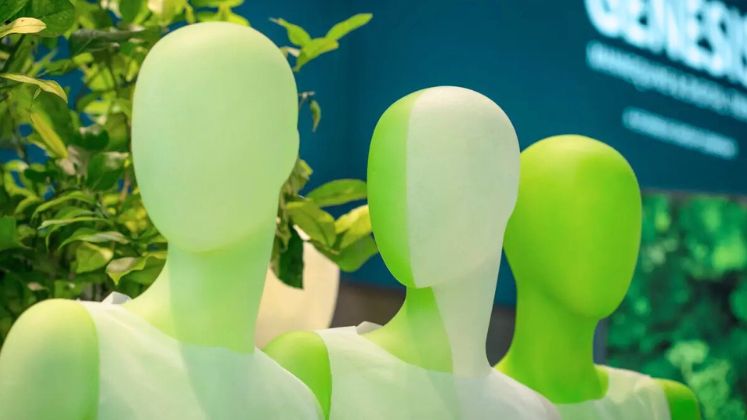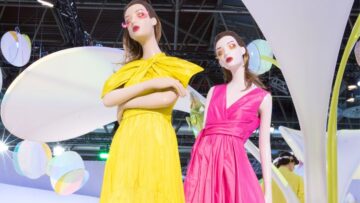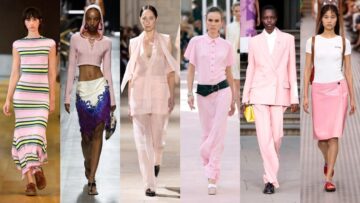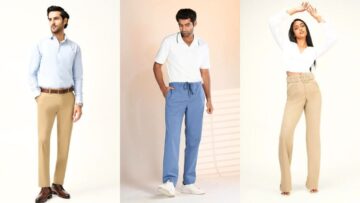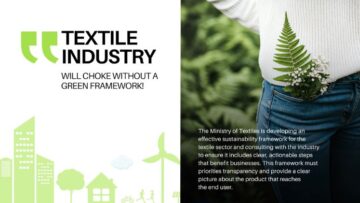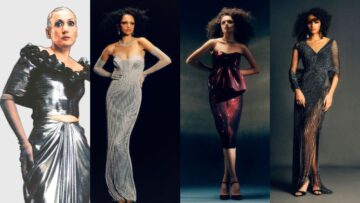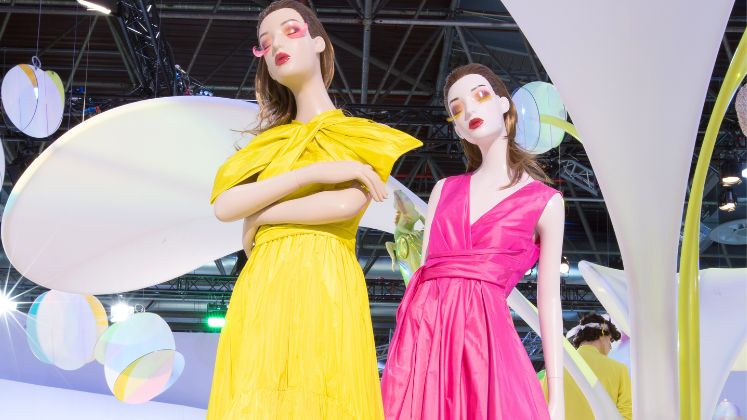 Mannequins are the unsung heroes of the fashion world! These lifeless figures have flexed their style muscles since the 15th century, standing tall and silent as the ultimate trendsetters of store windows. From showing off the latest collection to giving shoppers a glimpse of what’s hot, mannequins have always had one job—making fashion irresistible.
Mannequins are the unsung heroes of the fashion world! These lifeless figures have flexed their style muscles since the 15th century, standing tall and silent as the ultimate trendsetters of store windows. From showing off the latest collection to giving shoppers a glimpse of what’s hot, mannequins have always had one job—making fashion irresistible.
But what’s the latest twist in this fashion tale? ‘The times, they are a-changin’, as evident in jaw-dropping videos from stores in the UAE and China, where live models replace traditional mannequins. Still, the mannequin’s legacy is far from over! In fact, they are evolving to keep pace with the changing retail industry.
For instance, as the fashion industry continues to embrace body positivity, the focus on plus-size models has gained momentum, driven by a shift towards inclusivity and against body shaming.
Along with this emphasis on diversity, there is also a growing focus on sustainability within the industry. Manufacturers are moving away from traditional fibreglass and plastic in favour of recyclable plastics like Linear Low-Density Polyethylene (LLDPE) and other sustainable raw materials such as coconut, hemp, bamboo, old textiles and recycled fibreglass to create their products. Moreover, biodegradable packaging and the use of NFC tags are also becoming common practices.
Retailers Embrace Diversity and Inclusivity
A UK study published nearly eight years ago in the Journal of Eating Disorders highlighted just how much retailers have evolved. It examined mannequins in 17 national fashion retailers along the high streets of two English cities, revealing that every female mannequin was categorised as underweight, while only 8 per cent of male mannequins were underweight.
Retailers are now devising unique ways to make the stores feel more personal and inclusive by embracing more diverse body representations. For instance, the mannequins at Gymshark Regent Street store in London were created based on ‘REAL’ members of the Gymshark community. The British-based athletic apparel retailer, which sells to more than 180 countries and has an annual revenue of £ 556.2 (US $ 709 million), hired a personal trainer to ensure models posed with correct form. The images were then translated into code and 3D printed.
US sportswear giant Nike also jumped on the inclusive mannequin trend, introducing plus-size and para-sport mannequins in their stores. In fact, when Nike introduced its new plus-size mannequin at its flagship store in London, searches for ‘Nike’ and ‘plus size’ on the British fashion retailer Love the Sales surged by 387 per cent. The brand followed the footsteps of retailers like Old Navy and Nordstrom and the UK department store Debenhams, all of which have embraced size-inclusive mannequins.
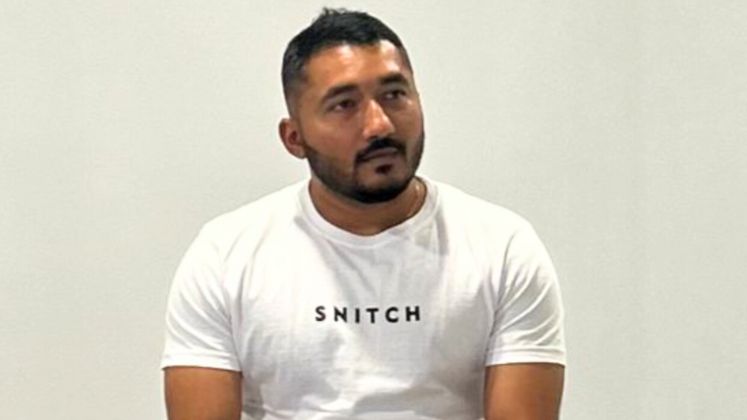
“Nowadays, mannequins reflect different body shapes, skin tones and personalities. This shift connects with customers who appreciate authenticity. We’re also actively exploring custom designs for flagship stores,” said Chetan Siyal, Founding Member and CMO, Snitch. The men’s fashion brand, which operates 34 stores nationwide and has an Annual Recurring Revenue of Rs.600 crore (US $ 69.38 million), features 6-8 mannequins per store.
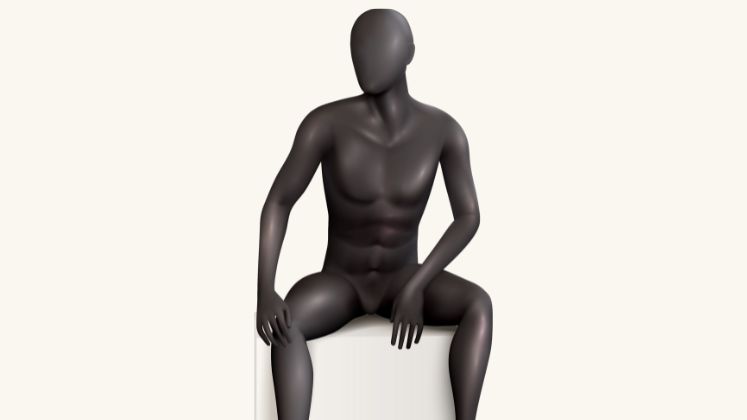 This shift in representation is paying off. As Chetan pointed out, “The displays feel more relatable and we’ve seen more people coming into the store and interacting with the styles we offer. For instance, during our athleisure launch, showcasing a variety of body types on mannequins led to a 15 per cent increase in sales for that collection.”
This shift in representation is paying off. As Chetan pointed out, “The displays feel more relatable and we’ve seen more people coming into the store and interacting with the styles we offer. For instance, during our athleisure launch, showcasing a variety of body types on mannequins led to a 15 per cent increase in sales for that collection.”
“The most important changes in mannequin design reflect a push towards size inclusivity that expert stylists say has been more evident even before larger retailers began adopting such forms,” said Puspen Maity, CEO, Technosport.
The activewear brand operates over 6,000 multi-brand outlets (MBOs) across the country. In the fiscal year 2024-25, Technosport has opened seven exclusive brand outlets in key cities including Bengaluru, Coimbatore, Tirupur, Salem, Mysore and Hyderabad, with plans to launch five more stores this year. Looking ahead, the company aims to open additional 50-60 stores in the next financial year.

Echoing similar sentiments, Rajesh Jain, MD and CEO, Lacoste, highlighted, “We feature a wide range of sizes, gender and races, with unique styling elements like mannequins with braided hair.” Since its launch in India in 1993, the French brand has expanded to over 50 stores in 20 plus cities.
Rajesh emphasised, “Every mannequin is globally planned to embody Lacoste values, capturing the freedom of movement that defines us. Our recent festive campaign, featuring Lacoste kurtas on mannequins drove exceptional sales, with the collection selling out in just three weeks.”

Similarly, Akhil Duggar Jain, MD, Madame pointed out, “More natural poses and lifelike features, moving away from stiff, idealised presentations are becoming common. Mannequins at our stores are elegantly posed, showcasing a sleek, feminine and classy aesthetic.” The women’s westernwear brand, with over 150 exclusive brand outlets (EBOs) and an annual revenue of Rs.380 crore, features a minimum of three mannequins per store to enhance its visual appeal. The brand procures around 60 mannequins annually.
Mannequin selection is also carefully aligned with the clothing they display, ensuring designs and fits are showcased effectively. For instance, as Akhil explains, flowy, bohemian dresses shine on mannequins with relaxed, natural poses, while structured, tailored suits command attention on mannequins with confident, assertive stances.
Retailers emphasise that ROI is typically measured through a combination of sales data analysis—comparing performance before and after introducing new mannequin displays—and foot traffic monitoring.
The mannequin world is also getting a high-tech makeover with Digital Mannequin. The brain child of retail agency Outform, Digital Mannequin is a 3D-like hologram that uses a human model to show off clothes and accessories. The shoppers can scan a QR code on display to take control of what they see, choosing products, angles and even which model wears them, all from their smartphones.
After finalising, customers can buy the product right then and there, through a convenient microsite. This provides a more personalised experience, with models of different ethnicities and body types to choose from.
Retailers, in turn, can gather valuable in-store data, like content preferences and shopper behaviour, while integrating pricing, stock updates and promotions to improve their offerings and better understand their audience.
Experts say the adoption of Digital Mannequin is expected to grow as more early adopters embrace the technology and set trends in the industry.
Mannequins Move Toward Sustainability
The global mannequin market is expected to grow from US $ 5.4 billion in 2024 to US $ 6.9 billion by 2033, with a steady annual growth rate of 2.76 per cent. This growth is fuelled by retailers expanding into Tier-2, Tier-3 and Tier-4 markets, a stronger focus on visual merchandising and innovations like mannequins with adjustable shapes and realistic textures and shapes.
When it comes to sustainability, the mannequin industry is making good progress. Fibreglass, resin and plastics dominate the scene, but as you might guess, they’re not exactly eco-friendly.
Brands are starting to focus on sustainability through their mannequins. For example, denim maker Levi Strauss has begun using mannequins made from 100 per cent recycled base stock that blends both post-industrial and post-consumer materials at selected Levi’s® retail and wholesale locations. The material has an unlimited shelf life and the mannequins themselves use a universal base, which means stores will not have to discard a base because it doesn’t fit.
The Stella McCartney store on Old Bond Street uses eco-friendly mannequins made by Bonaveri, an Italian company known for its artistic mannequins. These mannequins are made from BPlast®, a bioplastic material made from 72 per cent sugarcane, which helps lower the brand’s CO2 emissions. The mannequins are also coated with BPaint®, which is made from renewable organic materials and doesn’t contain any petroleum-based substances.
No wonder, manufacturers are now making more sustainable offerings to tap into this growing demand.
Purform Mannequins, a New Zealand-based company, offers sustainable mannequins that are now made in India. “Our mannequins are crafted from LLDPE, a type of plastic renowned for its strength, flexibility and impact resistance. Plus, it’s fully ‘recyclable’,” shared Sanjeev Magon, Owner of Jambudweep Impex, the sole distributor of Purform Mannequins in India. Their mannequins are also exported to many other countries across the world.
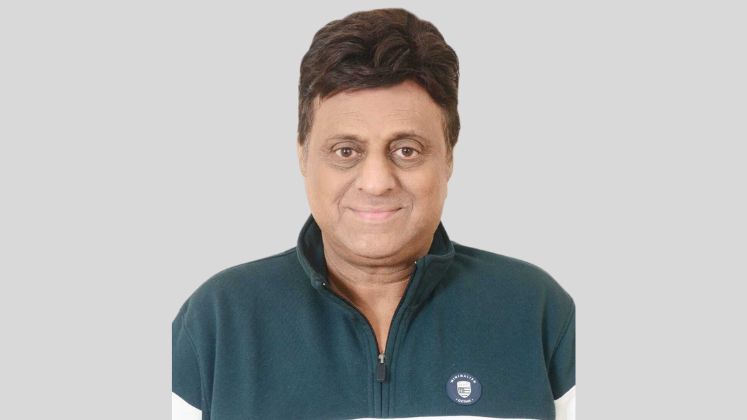
He also explained, “Our mannequins and body forms won’t chip or break like fibreglass mannequins and since the colour is in the plastic, there’s no paint to scratch off. We offer international sizing, sturdy fittings and easy-to-use magnetic arm connections, making dressing and handling incredibly convenient.”
Similarly, Genesis Mannequins, based in London, manufactures its products using Susterra®, a 100 per cent sustainable raw material created by Primient Covation LLC. Susterra® is non-toxic and food-safe. The company also offers mannequins made from various sustainable fibres such as coconut, hemp, flax, bamboo, old textiles, recycled fibreglass, wood and viscose, based on customer requests. Some of Genesis’s clients include Dolce & Gabbana, Ralph Lauren, Uniqlo and Selfridges.
Since making its debut in the Indian market in 2019, the company claims to have seen a 25 per cent – 35 per cent growth in sales year after year.
“We make mannequins using ABS (Acrylonitrile Butadiene Styrene) plastic sheets, which are strong and weather-resistant. This means they last longer and don’t need to be replaced as often, helping to reduce waste,” claimed Ravi Verma, Owner, Clone Mannequin, a Delhi-based manufacturer who makes mannequins, dummies, steamers, hangers and VM Props for brands and high-street retailers.
Meanwhile, Netherlands-based NOBS Mannequins offers mannequins from recycled plastic that are 100 per cent recyclable. It also includes NFC tags and comes in eco-friendly packaging. Each mannequin costs around £ 490 (US $ 598.03).
Customisation Takes the Lead
Manufacturers also emphasised that retailers are now focusing more on creating mannequins that reflect the unique style and values of their brands. The ‘one size fits all’ approach no longer works.
“For example, Woodland prefers headless mannequins in grey, sticking to classic designs. Jockey goes for white, glossy mannequins, while Puma opts for sporty mannequins in matte grey,” stated Sapna Arora, Owner of Delhi-based Shri Mahakal Dummy House, which makes 5,000-6,000 mannequins a year for brands like Woodland, Puma, Jockey and Sabhyata.

“Customisation is at the heart of our operations. For instance, we worked with a luxury Indian ethnicwear brand to create mannequins showcasing bridal poses with detailed hand postures for displaying jewellery. For a sportswear brand, we developed athletic mannequins with muscular builds and dynamic poses to highlight motion,” said Ravi Verma.
He also mentioned that skin tones have become more inclusive. While mannequins once featured only fair or white tones, the demand for diversity has led to the introduction of darker tones, mixed hues and customisable shades to reflect different ethnicities. Plus-size mannequins have also become more popular. However, white gloss mannequins still remain in demand due to their durability and reusability.
“These mannequins can be easily washed and offer a clean surface for retailers to experiment with different colours, helping clothing stand out,” explained Manish Choudhary, Owner, Delhi Mannequin. His Faridabad-based company manufactures over 50 types of mannequins and serves clients like Hallmark, Shoppers Stop, Lifestyle and Balaji Garments.
Another manufacturer, Parveen Malhotra, Owner, Asian Mannequin, noted that golden-coloured mannequins are gaining popularity, with white and champagne tones also trending. In terms of finish, matte is increasingly preferred by retailers.
“Over the last 4-5 years, the demand for wooden arm mannequins has grown,” said Parveen. He further added, “These mannequins, imported from China, help fabric sit better and offer improved craftsmanship.” His Delhi-based company produces 400- 500 mannequins per year.
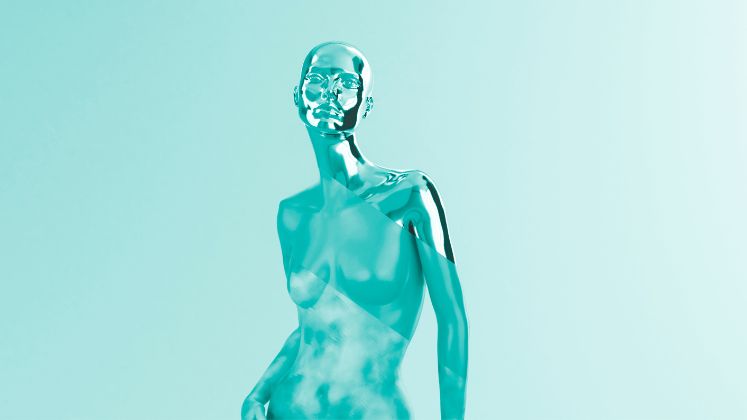 Whereas, Rajinder Singh Bhatia, Owner of Creative Mannequin, mentioned that glossy and chromemannequins are also attracting attention from retailers. “They are more durable and have a longer lifespan. Retailers are gradually shifting from matte to glossy and chrome mannequins,” he added. His company manufactures 5,000-7,000 mannequins annually.
Whereas, Rajinder Singh Bhatia, Owner of Creative Mannequin, mentioned that glossy and chromemannequins are also attracting attention from retailers. “They are more durable and have a longer lifespan. Retailers are gradually shifting from matte to glossy and chrome mannequins,” he added. His company manufactures 5,000-7,000 mannequins annually.
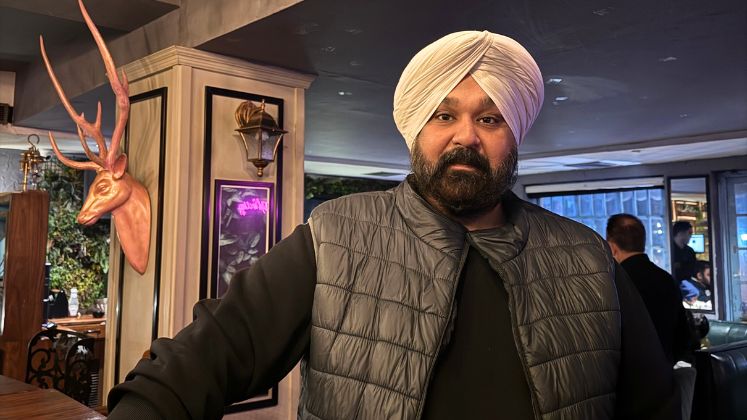
“The average cost of manufacturing a mannequin is around Rs. 9,000 (US $ 104), but while Indian players tend to focus on just enough to display garments, the international market is willing to pay a premium for high-quality mannequins,” remarked Charanjeet Singh, Owner, Abstract Mannequin, which is based in Faridabad and exports mannequins across India and globally, including to the US, Europe and UAE.
It produces 36,000 mannequins annually and offers over 200 varieties. Its clients include major brands like Marks & Spencer, Gap and Westside. It also creates motorised running mannequins for an Indian brand.
Motion mannequins are also slowly picking up pace, with manufacturers now introducing mannequins that can run, walk and even cycle – talk about a mannequin workout! For example, ADM (UK) Ltd., has introduced Cyberquins, the world’s only mannequins designed to run, walk and cycle. Unlike traditional mannequins, Cyberquins grab attention and draw focus towards clothes, shoes and accessories on display.
Technology is also constantly pushing the boundaries. “We’re possibly the only manufacturers in India specialising in 3D printing and designing mannequins,” said Charanjeet, further adding, “With this process, a person can be scanned and a mannequin is made based on that scan, customised to their exact size. We have specialised designers and robotics for this and we exclusively focus on this process.”
Experts reiterated that the mannequin industry is set for growth in coming years.
(With inputs by Kannupriya Mehta)

